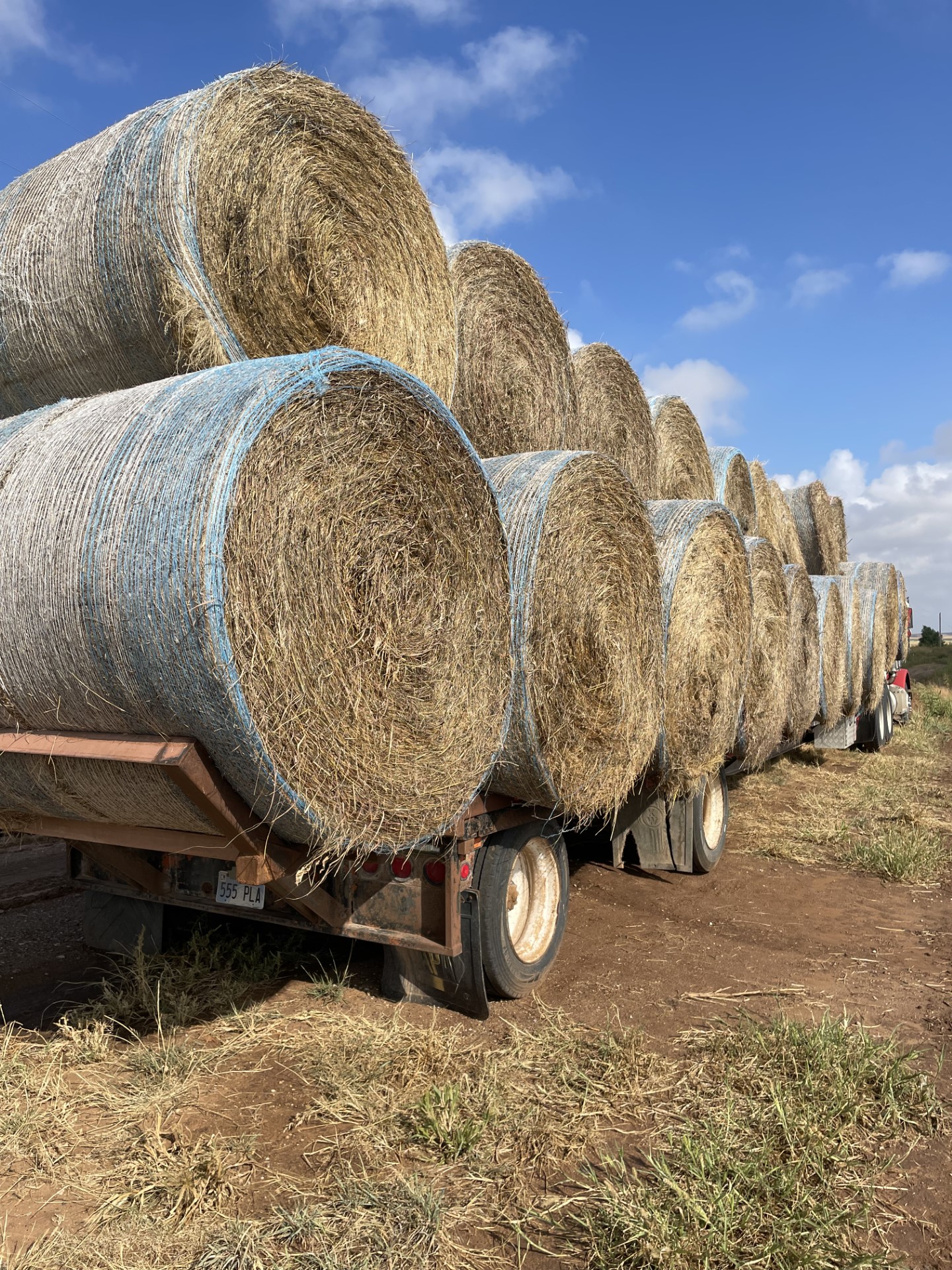State-By-State Hay Summary

State-By-State Hay Summary
Colorado—In the June 6 report, compared to the last report, trade activity and demand light. Triticale haylage harvest in southeast Colorado has begun. First cutting alfalfa across the state is underway. Stable hay sold mostly steady. Growers and buyers are beginning to contract new crop first cutting baled alfalfa in northeast Colorado. Growers are reducing old crop asking prices in an effort to limit carry over. According to the NASS Colorado Crop Progress Report for week ending June 2, alfalfa first cutting harvested is 12%.
Missouri—In the June 6 report, compared to last report, demand is light to moderate. The supply of hay is light to moderate. Hay progress continues to move along at a good pace. Despite rains and weather interruptions producers are still ahead of the five year average. As of the start of this week the first cutting of alfalfa is 54% complete and other hay is at 34% done. Some new crop hay is moving around prices have remained surprisingly strong.
Nebraska—In the June 6 report, compared to last report, bales of old crop and new crop hay too lightly tested for a market comparison. Ground and delivered hay and new crop alfalfa, dehydrated pellets sold steady. Demand is very light for old and new crop hay. Few, isolated sales of new crop alfalfa sold in the easy to transport large squares and small squares in 21 pack bundles. New crop rounds of alfalfa currently at a standstill from reporting contacts. Western area and the far north central areas are a tick dry on top. But haying conditions are very good with some producers getting dairy quality hay on first cutting. Contacts along with their agronomist around Lexington to Gothenburg areas probed the ground in various fields with a 4-foot prob and soil profile was wet the entire depth. Grass meadows are looking very good and could produce a lot of hay if the conditions continue in a positive way.
Oklahoma—In the June 7 report, compared to the last report, hay trade is slow to a standstill. As we continue with rain across the state, getting the first cutting baled and producers in their fields have made it difficult. Still, a lot of old crop hay to be sold. Next report will be released June 21.
Texas—In the May 31 report, hay prices are mostly steady to firm. Hay demand is picking up. Some excess old crop hay as well as some first cutting are beginning to move, but the majority of the hay moving is still previously contracted loads that are now being delivered. Winter wheat in the Panhandle is beginning to be laid down for hay, as the lack of precipitation in the last month has caused producers to lay it down for hay instead of hold on to the crop for grain production. First cutting has wrapped up across the majority of the state. Next report will be released June 14.
South Dakota—In the June 7 report, compared to last report, demand and movement have been lower than normal with prices being unsettled. Producers are cutting right now but it is supposed to rain this weekend which might slow them down. According to the U.S. Drought Monitor website, South Dakota is mostly under normal soil conditions except for western South Dakota is under abnormally dry to moderately dry soil conditions.
New Mexico—In the June 7 report, compared to last report, sales are steady and the demand is low in some parts of the state. There has been little to no moisture across the state. Alfalfa hay for the first cutting is 80% complete, southern part of the state are 14 % into their second cutting. According to NASS, New Mexico field office June 2, hay and roughage supplies were reported as 42% very short, 46% short, 11% adequate, and 1% surplus, compared with 41% very short, 48% short, and 11% adequate last week. Stock water supplies were reported as 64 percent very short, 17 percent short, 18 percent adequate, and 1 percent surplus, compared with 60% very short, 22% short, and 18% adequate last week.
Wyoming—In the May 30 report, compared to last week, hay prices steady on thin test of the market. Demand was light. Some producers are thinking of starting next week on alfalfa production especially in fields that have a lot of weeds like mustard. Cool weather continues across the region and the eastern third of the state is abnormally dry per U.S. drought monitoring. Next report will be released June 13.
Montana—In the May 31 report, compared to last report, hay was too lightly tested to develop any market trend. Hay sales were near a standstill week. Showers and afternoon thunderstorms fell in many locations this week which helped further improve drought conditions in the east and central portions of the state. Some producers are starting to talk about new crop prices but many remain unclear on where they want to price new crop hay. Only one small contract of new crop hay was seen this week. Western drought conditions continue to see expansion as most locations in western Montana missed the rainfall this past week. Very light demand continues to be seen as most ranchers have turned out pairs for the year. Demand for straw is light as heavy straw supplies continue to be seen especially in the northern portion of the state. Next report will be released June 14.



